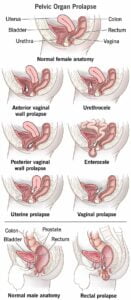Diagnosing Wheat Allergy
Initial Assessment To diagnose wheat allergy, a combination of a physical examination, a comprehensive medical history, and specific tests are utilized.
Diagnostic Tests
- Skin Test: This involves applying small amounts of allergen extracts, including wheat proteins, to the skin. A positive reaction is indicated by a red, itchy bump at the test site.
- Blood Test: Used when skin tests are not possible, this test detects antibodies against wheat proteins.
- Food Diary: Keeping a record of food intake and symptom onset can help identify triggers.
- Elimination Diet: Removing and then reintroducing foods can pinpoint allergens.
- Food Challenge Testing: Consuming the suspected allergen under medical supervision to observe reactions.
Treatment Strategies The primary treatment for wheat allergy is avoiding wheat proteins. This requires diligent label reading due to their prevalence in processed foods.
Medications
- Antihistamines: These can alleviate minor allergic reactions post wheat exposure.
- Epinephrine: Carrying injectable epinephrine is crucial for those at risk of severe reactions.
Emergency Response Immediate medical attention is vital for anaphylactic reactions, even after epinephrine administration.
Emerging Therapies Research is ongoing into immunotherapies that might desensitize the body to wheat allergens, with some promising early results.
Self-Care for Wheat Allergy
Proactive Measures To minimize wheat exposure and manage accidental ingestion:
- Inform Caregivers: Ensure that anyone responsible for your child, including school staff, is aware of the allergy and its symptoms. Teach them how to use an epinephrine pen if necessary.
- Medical ID Bracelet: Wear a bracelet that details your allergy and the urgency for immediate care in case of anaphylaxis.
- Label Vigilance: Always check labels for wheat content, as ingredients can change and wheat is often used as a thickener.
- Gluten-Free Shopping: Look for gluten-free options, but be mindful that you may not need to avoid all grains.
- Wheat-Free Cooking: Use wheat-free cookbooks for safe and enjoyable meal preparation.
- Dining Out Safely: Communicate your allergy to restaurant staff and choose simple, fresh dishes.
Preparing for Medical Consultation If you suspect a wheat allergy, consult a doctor, who may refer you to an allergist.
Before the Appointment Compile a list of:
- Symptoms and their relation to food intake
- Family history of allergies or asthma
- Current medications, vitamins, or supplements
Questions for Your Doctor Consider asking:
- Are my symptoms indicative of an allergy?
- Do I need to undergo allergy testing?
- Should I consult an allergist?
- Is carrying epinephrine necessary for me?
- Can you provide informational resources?
Expectations During the Consultation Your doctor may inquire about:
- The timing of symptom onset post-meal
- Correlation between symptoms and specific foods
- Dietary details, especially for infants
- The quantity of food consumed and other foods eaten concurrently


